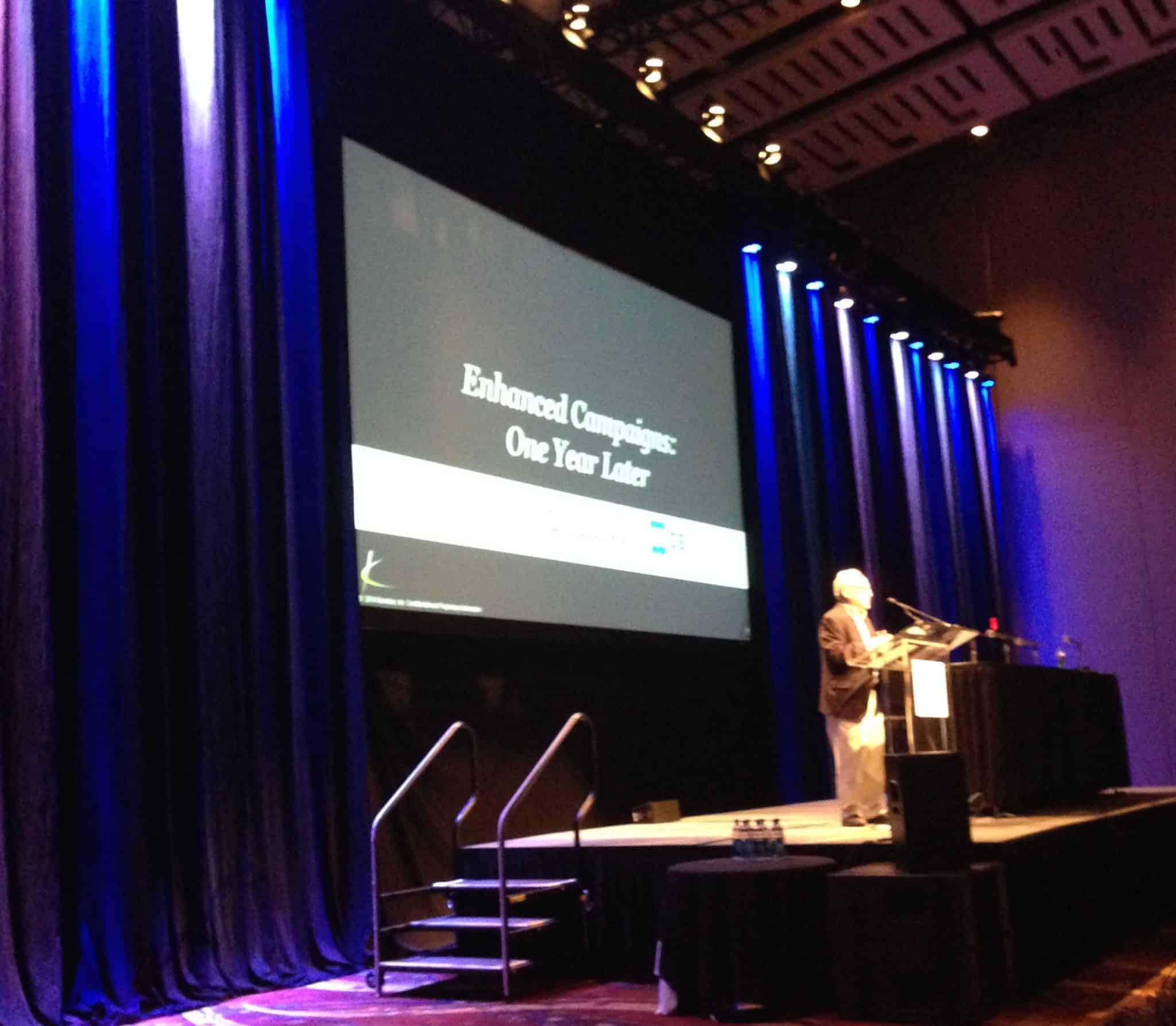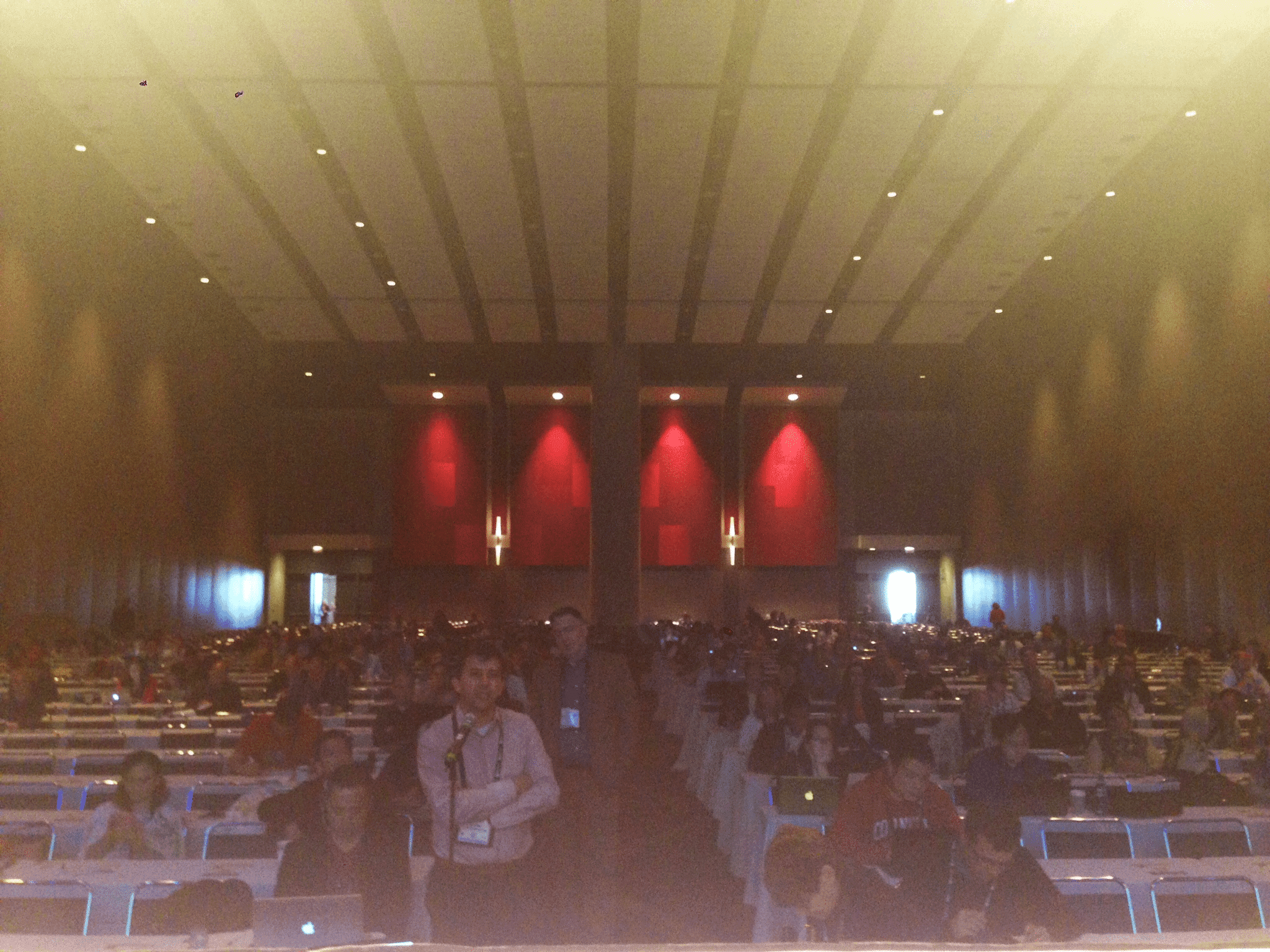OK, sorry for the acronym overload. FWIW (there I go again!) BEC is a new one I coined for Before Enhanced Campaigns, an era that many marketers can hardly remember. IRCE stands for Internet Retailer Conference and Exhibition, one of the biggest e-commerce events in the world.
Last week, IRCE was held in Chicago and I had the pleasure of co-presenting with Adam Garcia, director of online marketing for Walgreens, in a session titled, “A Year Later: The Impact of Enhanced Campaigns.”

With the one-year anniversary of the Enhanced Campaigns migration approaching on July 22, we thought it’d be fun to travel back to the time that multi-device marketing forgot and revisit what went down.
But first, let me take a selfie…

To give context for the original Google announcement and remind everyone of the kerfuffle that ensued, we referenced primary research from the survey conducted by Skai that will be released next month.
Of course, every marketer had his/her own opinions on Enhanced Campaigns and saw varying levels of performance after the changeover. It was really interesting to hear Adam’s perspective on how Walgreens adapted to the changes across their many product lines and search programs by adjusting mobile bids and optimizing all landing pages by removing flash.
We also spent some time running through the key findings of the research published by Skai and Yahoo on the Mobile Opportunity Gap. Looking at consumer trends across devices, we found some key areas where retailers need to improve to deliver seamless shopping experiences.
Here are the 5 best practices we identified for multi-device marketing:
1. Establish concrete, device-specific goals.
2. Align messaging across multiple channels.
3. Leverage advanced targeting techniques.
4. Deploy device-specific bidding strategies.
5. Optimize the post-click experience.
6. Implement multi-touch attribution models.
And here are the 4 tips we shared for future-proofing:
1. Broader your definitions of “mobile” and “devices.” (Think wearable tech, home automation, etc.)
2. Be mindful of new Google offerings. (E.g. Shopping Campaigns.)
3. Leverage mobile app download promotion. (Drive installs directly from PPC ads.)
4. Don’t forget Bing and Yahoo! (Product Ads and Stream Ads can deliver strong results.)

During the Q&A at the end of our session, we got a great question from a guy in the audience (pictured above, arms crossed, standing at mic). He asked what other engines U.S. retailers should be considering beyond Google, Bing, and Yahoo.
My first response was that if his company thinks they’ve exhausted those sources, they should think again. There’s also more ways to optimize SEM performance and generate more scale and efficiency. Before expanding beyond the tier 1 engines, all campaign variables should be, to paraphrase one of Adam’s key takeaways “tested, tested, and retested.”
That said, there are definitely alternative PPC networks such as adMarketplace that can deliver strong results. And there are retargeting networks like Criteo that can extend PPC reach into display. Finally, there’s Intent-Driven Audiences and Demand-Driven Campaigns from Skai which can take your best performing search keywords and ads and automatically turn them into Facebook ad placements.
All told, it was a great session and a great show. Hope you’ll join us for a trip down memory lane to BEC when we release our paper on July 22nd. Meanwhile, here’s the deck from our IRCE session so you can see some of the preliminary data…
You are currently viewing a placeholder content from Default. To access the actual content, click the button below. Please note that doing so will share data with third-party providers.
